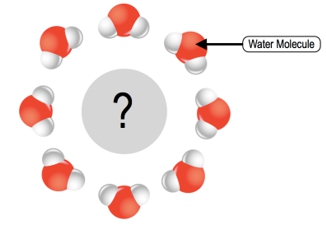Water is often referred to as the universal solvent due to its remarkable ability to dissolve a wide variety of substances, which is crucial for many biological processes. In this context, it is important to understand the distinction between a solvent and a solute. The solvent is the substance that performs the dissolving, typically present in larger quantities, while the solute is the substance that is dissolved, usually found in smaller amounts.
For example, when table salt (sodium chloride, NaCl) is added to water, the water acts as the solvent. Sodium chloride consists of sodium cations (Na+) and chloride anions (Cl-) that are held together by ionic bonds. However, when salt is dissolved in water, these ionic bonds are disrupted. The water molecules surround the sodium and chloride ions, preventing them from recombining into solid salt. This interaction illustrates how water, as the solvent, facilitates the dissolution process.
The combination of the solute and solvent results in a solution. Specifically, when water is the solvent, the solution is termed an aqueous solution. The term "aqueous" derives from the Latin word for water, highlighting the role of water in the solution. In an aqueous solution, water molecules form a hydration shell around the dissolved ions, which helps to stabilize them in solution and enhances their interaction with other molecules.
Understanding how water functions as a universal solvent is fundamental, as it allows for the dissolution of various biological molecules, including proteins, nucleic acids, and carbohydrates. This property of water is essential for many biochemical reactions and processes that sustain life.



